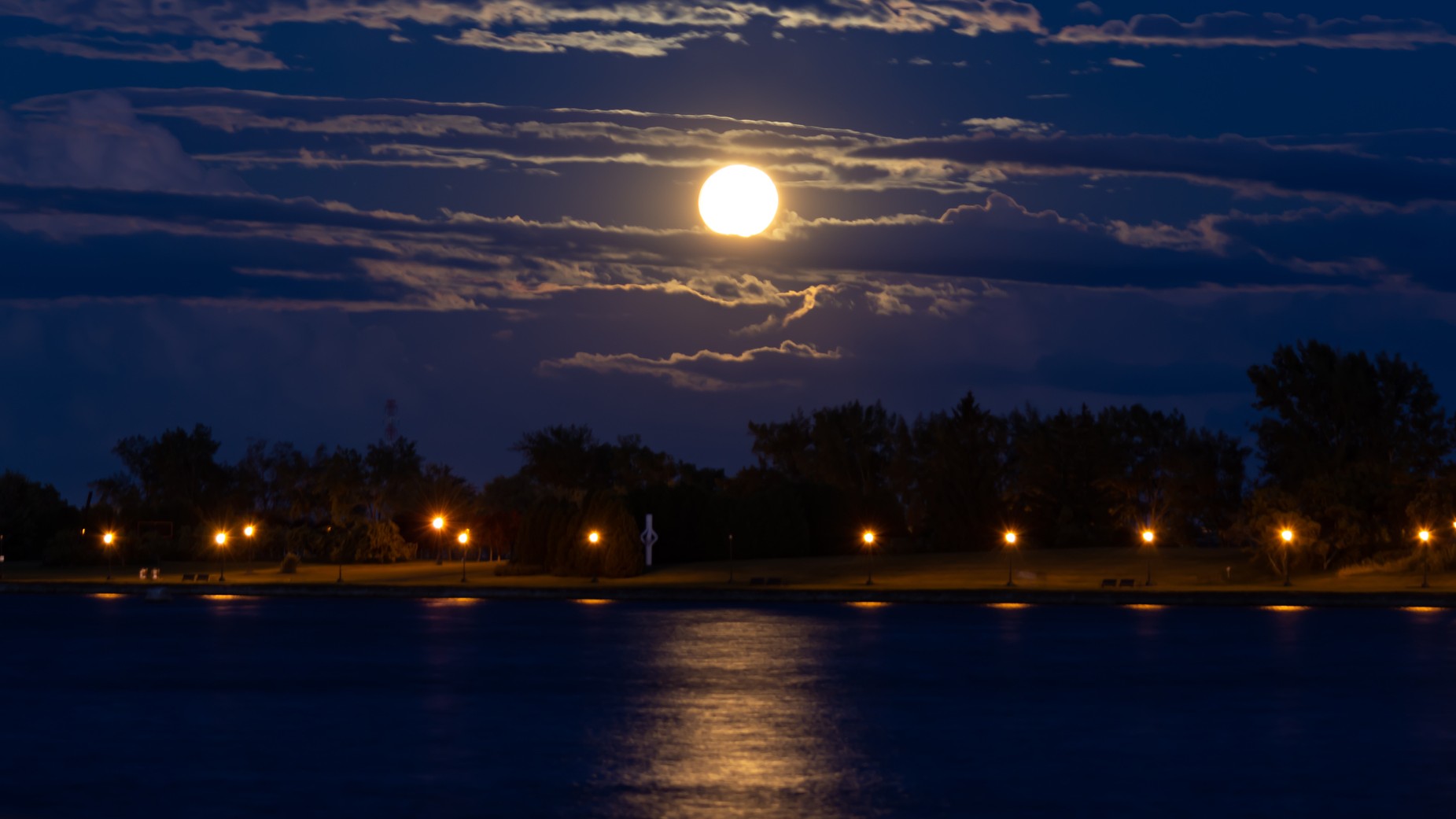
August's full moon, known as the Sturgeon Supermoon, will be at its fullest on Tuesday (August 1). The second supermoon of the year (after July's Buck Moon), it will be almost as large as 2023's biggest supermoon — which will be the next full moon, rising on Aug. 30. The Sturgeon Supermoon is also the first of two full moons in August, making the Aug. 30 full moon a somewhat rare Blue Moon.
Also appearing bright and full on Monday and Wednesday, August's full moon is most commonly named after North America's prolific sturgeon family of fish, which are found in the Great Lakes at this time of year, according to timeanddate.com. The Anishinaabeg people call it Minoomini Giizis and the Grain (Wild Rice) Moon, according to the Center for Native American Studies.
Related: Will Earth ever lose its moon
The Sturgeon Moon will be at its fullest at 1:33 p.m. EDT on Tuesday, Aug. 1, 2023. From North America, it will be best seen as it rises in the east that evening — though the exact time will depend on the location of the viewer. As it appears, the moon will be over 99% illuminated as it rises in the east at dusk, opposite the setting sun.
At its peak, the Sturgeon Moon will be 222,023 miles (357,311 kilometers) from Earth's center, making it the second-largest supermoon of 2023. A supermoon orbits a little closer to Earth than the moon does on average, so appears slightly bigger and brighter. It occurs because the moon has an elliptical orbit of Earth.
Each month, the moon has a perigee (closest) and apogee (farthest) point. The mean distance of perigee and apogee can range from 225,800 to 251,800 miles (363,400 to 405,500 km), respectively. A full moon that comes within 90% of perigee in a given month qualifies as a supermoon, according to Fred Espenak, an astronomer and former eclipse calculator for NASA.
After the Sturgeon Moon, the next full moon will be the Blue Moon on Aug. 30. The biggest and brightest supermoon of 2023, the Blue Moon will be 222,043 miles (357,344 km) from Earth. That's 20 miles (33 km) closer than the Sturgeon Moon.
The full moon is always visible with the naked eye (weather permitting), but those looking to get an extra detailed view of the Supermoon should consider investing in a pair of stargazing binoculars, or a good small telescope, to improve their skywatching experience.







